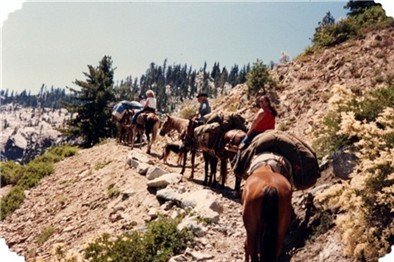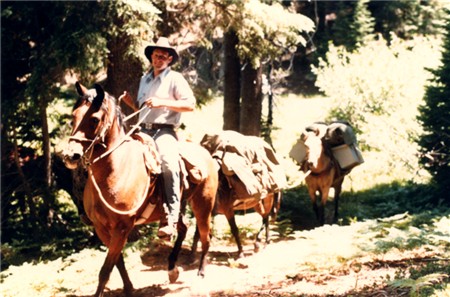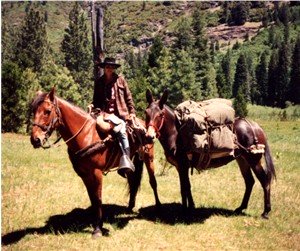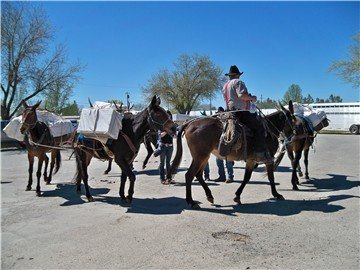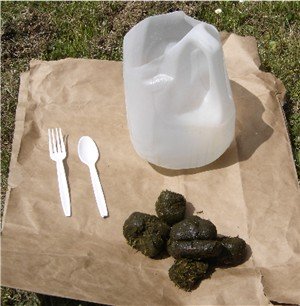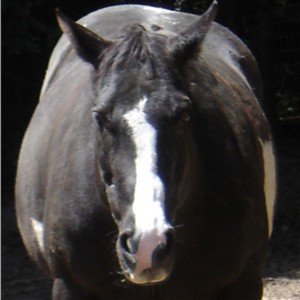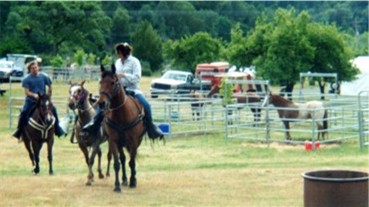Tips for Packing With Horses in the Mountains
Smart Strategy for a Successful Pack Trip
Packing with horses is an unforgettable experience. Once you have your horses prepared for a trip in the mountains, you’ll want to make sure you have everything your horse will need for a safe and successful pack trip.
Horse packing requires a little planning, because you are bound by space and weight limits. Bear in mind that dead weight is much harder to carry than live weight. The average pack animal in good healthy condition can pack about 20% of its body weight. So you'll need to choose carefully what to bring.
When you are eliminating items to lighten the load, you might be tempted to ditch the equine first aid kit or farrier tools. Don’t do it. Although you hope to never have to use these items on a horse pack trip, it can make all the difference in the world to your horse's well being.
There is no need to double up on these items. One set will do for a whole group of riders and pack animals, just make sure somebody’s got them on board before you head out. Speaking from personal experience….a word of caution….trust but verify.
Don’t just assume someone else will be bringing the first aid kit, or anything else for that matter. Find out for sure and find out what they've got in it. The following list is a very basic horse first aid kit, you can certainly build a more complete one. Self sufficiency is the name of the game when you are packing with horses.
A Very Basic Equine First Aid Kit
- a few rolls of vet wrap
- gauze
- providone-iodine
- antibacterial wound ointment like Nitrofurazone
- needle and suture material
- a pain killer like Bute or aspirin paste
- electrolyte paste
- equine eye wash
- bandage scissors
Feet First
Before you go packing with horses, make sure your group has a few farrier tools on hand. At least bring a shoe puller, a pair of pliers and a rasp. Everyone should have a hoof pick in their saddle bags. Many professional packers will bring a full farriers kit complete with spare shoes. If you are hiring a packer to haul your stuff in and leave you there for some days, make sure your group has their own set of tools for use in camp. A pair of EZ boots are a great idea too (like having a spare tire for your truck).
On one pack trip I would have given anything for a pair of EZ boots for a barefoot pack horse. We ended up sacrificing a coat. We cut it up and fashioned a pair of boots with the jacket and some leather cording. We got the animal down the mountain safely, but we vowed never to be caught unprepared again.
Grain Rations
Every horse and pack animal on the trip is going to need grain rations. Most of our horses come out of a horse packing trip with very little weight loss, but not my mare. She has never been an easy keeper. She has been known to loose 25-30 lbs on a 5 day pack trip. So I am challenged to give her the sheer volume of calories that she needs to keep her weight up.
My Mother and I came up with a grain mix that gives our horses the most bang for their buck.
- High energy sweet feed grain with molasses
- 1 oz. of rock salt/ per horse/ per day
- ½-¾ cup corn oil per horse/ per day
- powdered electrolytes
- more molasses
We mix these ingredients all together in a bucket and then load it into our grain bags. Yes, it is messy, but it’s the most action packed concoction we could come up with for my energy burning mare. Packing with horses is a real calorie burner. Our other horses do well on it too.
Make really convenient grain carry bags for saddle horses- from an old pair of jeans.
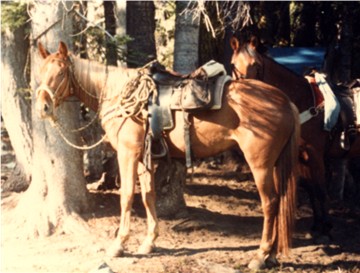 My Mother's beautiful Mustang Mare
My Mother's beautiful Mustang MareCut the legs off an old pair of jeans. If they have holes in them, patch them up. Then sew the cuff end of the leg hole closed. Attach two 10” lengths of cord to one bottom corner. On the other end, sew a pocket for a nylon drawstring. Now you have a long tube with a drawstring closure that you can fill with grain. Drape these over the saddle horn, one on each side. Use the strings on the bottom to secure the bags down so they don’t flop around when you ride. This was my Mother's awesome idea! They work great.
If you have not prepared your horse for green grass foraging, you’ll have to pack a pellet or cube feed in. A horse will need about 3% of its body weight in daily rations. That’s 30 lbs a day for a 1000 lb horse. You might need an extra pack horse to carry this in, depending on how long your trip is. Better this than a dead horse….
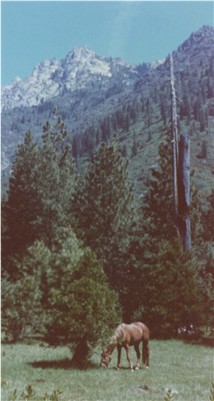 Grazing in the Mountains
Grazing in the MountainsSleep'n an Eat'n
When you’re out packing with horses you’ll need to have a means to secure your animals for the night. The safest way, is to tie your horse on a high line. This way your horse can move around a bit without getting tangled or banged up on a tree. It’s also the least damaging to trees. A high line is a length of rope tied 8-10 feet in the air from one tree to another. The horses are then secured to loops on the high line. You’ll want to make sure that there is enough line for all the animals in the group.
It will be up to you to see how your horse is contained during grazing. Whether you use hobbles, a stake and long line, or portable electric fence; think about how you want to handle your horses green grass grazing time.
Handy Things to Know when Packing with Horses
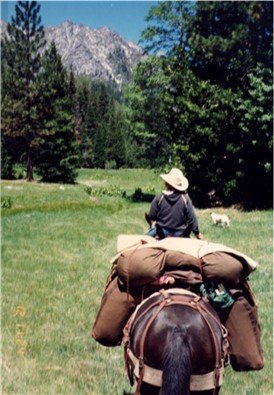 Horse Packing Destination!
Horse Packing Destination!Check your tack for wear and tear before you go. I always bring a length of leather or nylon boot laces. It can be useful to fix a number of repairs from broken snaps to breast collars. Once I had the Chicago screw come loose on a brand new bridle. Had it not been for a bit of leather cord, the bridle would have been useless. (I've also learned that a bit of clear nail polish applied to the screw threads will prevent the screw from backing out in the first place.)
Good blankets are a must for your animals comfort, and using a folded saddle blanket under your heavy pad offers even more advantages. Dried horse sweat and caked dirt on a blanket can be very irritating for your horse, especially in hot sweaty weather. With a folded saddle blanket you can flip it over and put a fresh clean side down with each new days ride…for 4 days anyway. This keeps your heavy saddle pad clean while protecting your horses back. And the light weight saddle blankets are easy to wash without being too hard on your washing machine at home.
Watch out for those pesky deer! Deer are hungry for salt. They are attracted to the salty sweat on your saddle. They have been known to gnaw on breast collars, back cinches and even chew all the saddle ties off your rig….yet another good reason to keep some cording on hand. When you're packing with horses, keep your saddle covered at night and absolutely protect your grain rations from dear and bears!
For those of you that have never been packing before: let your horse wear his halter under his bridle and tie your lead rope to your saddle. Keep a hoof pick and a pocket knife in handy your saddle bag.
It's all about adventure and making incredible memories. I sincerely wish you great joy in your next horse pack trip!
More equine Topics You May Enjoy
Easy Sand Test
Easy Sand Test - An easy sand test at home is a simple way to find out if your horse has sand in their gut. If your horse tests positive, you can do something about it.
Horse First Aid Kit
Find out what items you need to build a well rounded horse first aid kit for your barn, your truck and on the trail.
Return to top of Packing with Horses page to easily access the navigation bar on the left for more at Equine Spot.
